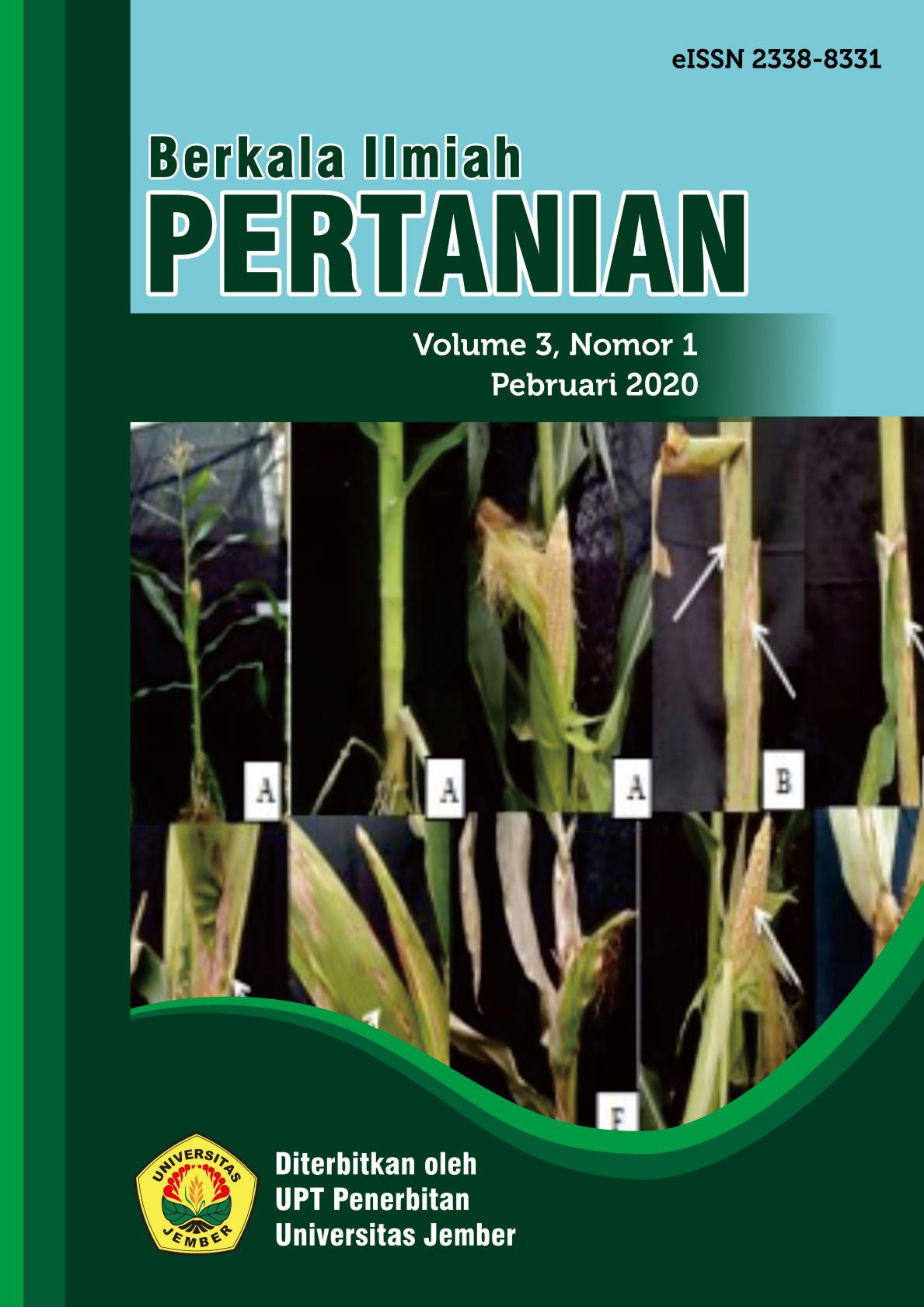STUDI KARAKTER MORFOLOGI DAN KANDUNGAN FENOL PADA SEPULUH GENOTIPE KEDELAI (Glycine max (L.) Merrill)
Keywords:
Genotype, Morphologycal Character, Phenol ContenAbstract
Soybean is one of the important food commodities for the people. Morphological characters are important to know about the seed potential, while the phenol content affected to the morphological characters of soybean. Research on the ten genotypes were expected to yield information about the seed that has the character of morphology and content of phenols most well so that the potential to generate the high production plant. This research was conducted with RAK (Randomized Block Design), using one treatment factor with ten genotypes (i.e. genotype one, genotype two, genotype three, genotype four, genotype five, Unej 1, Unej 2, Wilis, Malabar, and Ringgit). The data calculated using analysis of variance (Anova), and if the results expressed significantly different, then continued by using Scott Knott test (α 5%). The best seed selection, taken based on the morphological character (seed weight per plant 39,33 g/plant, weight of 100 seed 12,37 g/100 seed) and phenolic content 1,22 mg/g are genotype three.
Keywords: Genotype, Morphologycal Character and Phenol Content
Downloads
Downloads
Published
Issue
Section
License
Authors who publish with this journal agree to the following terms:
1.Authors retain copyright and grant the journal right of first publication with the work simultaneously licensed under a Creative Commons Attribution-NonCommercial 4.0 International License that allows others to share the work with an acknowledgement of the work's authorship and initial publication in this journal.
2.Authors are able to enter into separate, additional contractual arrangements for the non-exclusive distribution of the journal's published version of the work (e.g., post it to an institutional repository or publish it in a book), with an acknowledgement of its initial publication in this journal.
3.Authors are permitted and encouraged to post their work online (e.g., in institutional repositories or on their website) prior to and during the submission process, as it can lead to productive exchanges, as well as earlier and greater citation of published work (See The Effect of Open Access).




















